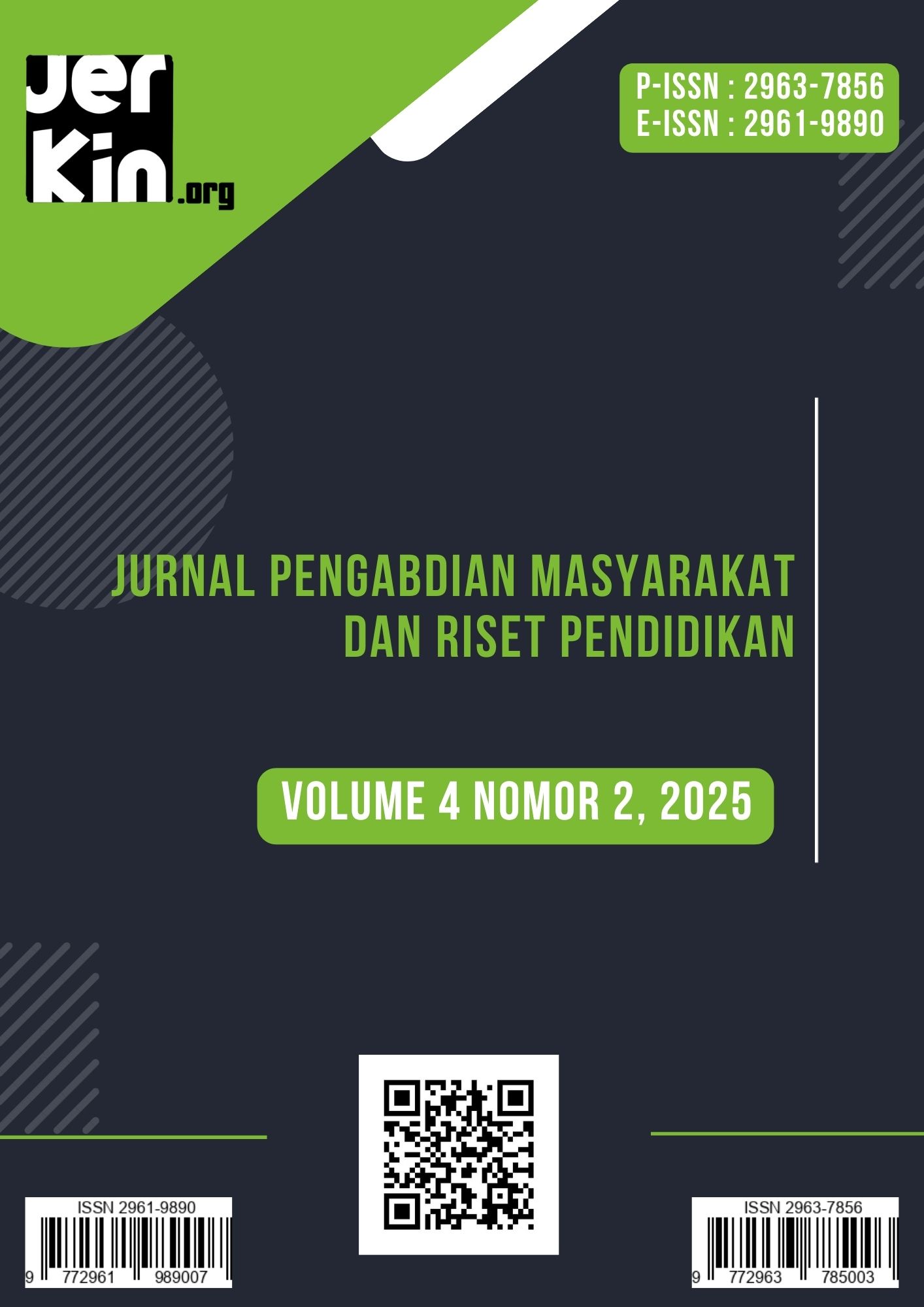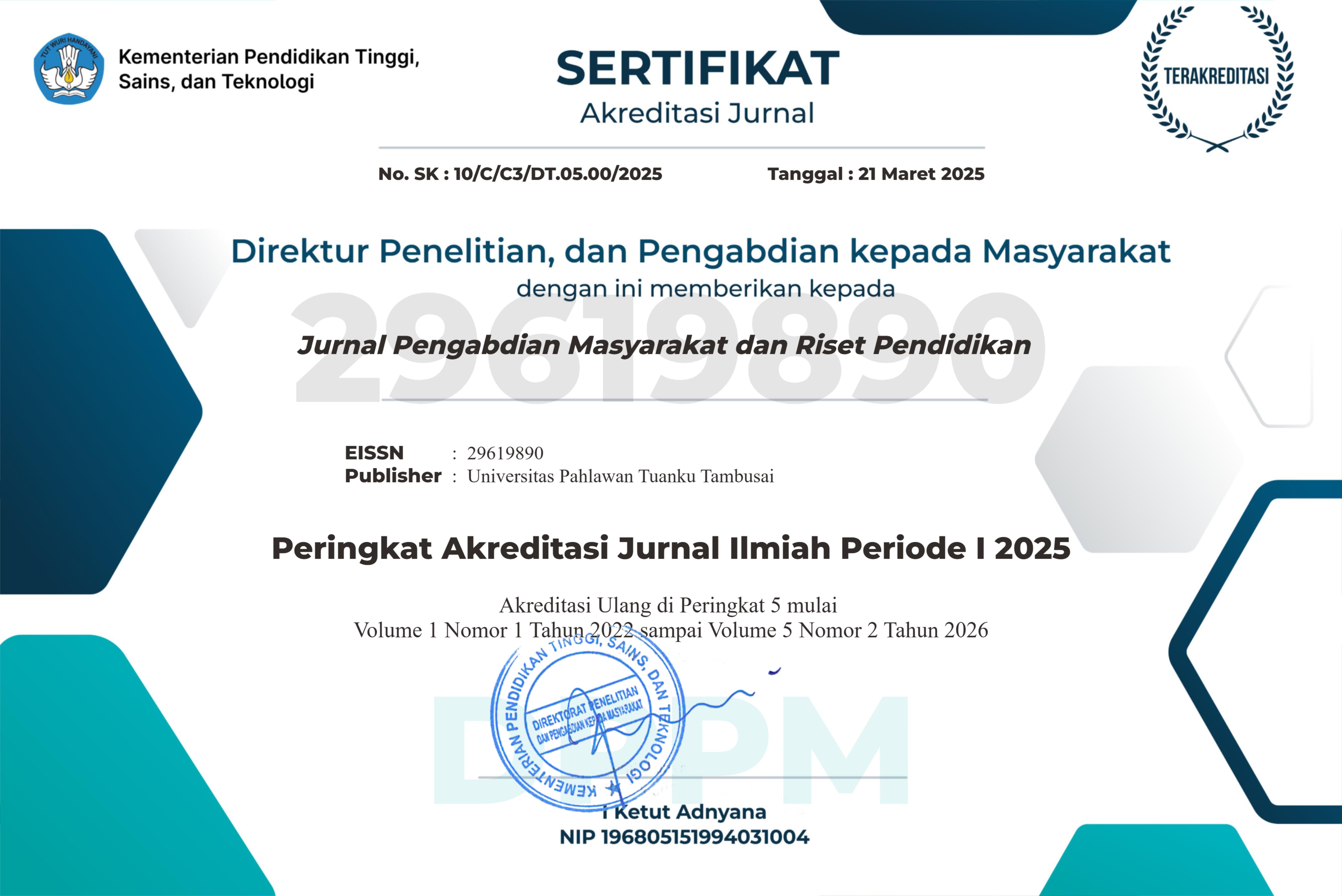Determinasi Inflasi dan Jumlah Uang Beredar Terhadap Pertumbuhan Ekonomi di Indonesia
Penelitian
DOI:
https://doi.org/10.31004/jerkin.v4i2.3051Keywords:
Inflation, Money Supply, Economic Growth, Monetary PolicyAbstract
Inflation and money supply pla y an essential role in influencing a country’s economic growth. This study aims to analyze the effect of inflation and money supply on economic growth in Indonesia from 2005 to 2024. The study uses secondary data obtained from Statistics Indonesia (BPS) and is analyzed using multiple linear regression methods. The results show that inflation has a negative but insignificant effect on economic growth, while the money supply has a positive and significant effect on Gross Domestic Product (GDP). Simultaneously, both variables significantly influence Indonesia’s economic growth. The coefficient of determination (R²) value of 0.987 indicates that 98.7% of the variation in GDP is explained by inflation and money supply. These findings highlight the importance of maintaining a balance between inflation control and liquidity management to ensure sustainable and stable economic growth in Indonesia. In addition, the results emphasize that monetary policy should be directed toward stimulating productive sectors, improving public purchasing power, and supporting investment activities. A well-coordinated policy between the government and the central bank is needed to maintain price stability while encouraging inclusive and long-term economic development.
References
Agusmianata, N., Militina, T., & Lestari, D. (2018). Pengaruh Jumlah Uang Beredar dan Tingkat Suku Bunga serta Pengeluaran Pemerintah terhadap Inflasi di Indonesia. Forum Ekonomi, 19(2), 188. https://doi.org/10.29264/jfor.v19i2.2125
Buana, D. P. K., Syukrina, E., Nabila, K. M., Fadila, D. Z., Anugrah, R., Sihombing, I. D., Sitepu, R. K. K., & Rivtryana, D. A. (2024). Pengaruh Tingkat Suku Bunga dan Jumlah Uang Beredar Terhadap Pertumbuhan Ekonomi Indonesia Dengan Inflasi Sebagai Variabel Intervening. Jurnal Ekonomi, Manajemen, Akuntansi, 3(4), 1771–1776. https://doi.org/10.1080/23322039
Fitrahwaty, F., Karin Sarah Angelina Siahaan, Maria Elpida Manalu, & Tia Handani. (2025). Analisis Pengaruh Inflasi, Jumlah Uang Beredar, Dan Suku Bunga Terhadap Pertumbuhan Ekonomi Di Provinsi Sumatera Utara: Studi Kasus Tahun 2010-2020. EKOMA : Jurnal Ekonomi, Manajemen, Akuntansi, 4(2), 3660–3669. https://doi.org/10.56799/ekoma.v4i2.6343
Ginting, A. M. (2016). Analisis Determinasi Inflasi Di Indonesia. Jurnal Organisasi Dan Manajemen, 12(1), 89–96. https://doi.org/10.33830/jom.v12i1.50.2016
Jawak, A. Y. P. B., & Sipayung, S. M. (2024). Pengaruh Inflasi, Jumlah Uang Beredar, Dan Bi Rate Terhadap Pertumbuhan Ekonomi Indonesia Tahun 2020-2023. Jurnal Ilmiah EkonomiIslam, 10(1), 1198–1205.
Komalasari, A., Fatmasari, D., & Suharto, T. (2024). Pengaruh Jumlah Uang Beredar, Tingkat Inflasi dan Suku Bunga Terhadap Pertumbuhan Ekonomi di Indonesia. Jurnal Ekonomi Bisnis Antartika, 2(1), 1–10. https://doi.org/10.70052/jeba.v2i1.245
Pasaribu, G. E. A., & Aji, T. S. (2025). The Effect of Money Supply, Inflation, Investment, and Exchange Rate On Gross Domestic Product (GDP) in Indonesia. East Asian Journal of Multidisciplinary Research, 4(2), 839–856. https://doi.org/10.55927/eajmr.v4i2.59
Prasasti, K. B., & Slamet, E. J. (2020). Pengaruh Jumlah Uang Beredar Terhadap Inflasi Dan Suku Bunga, Serta Terhadap Investasi Dan Pertumbuhan Ekonomi Di Indonesia. Jurnal Ekonomi Dan Bisnis Airlangga, 30(1), 39. https://doi.org/10.20473/jeba.v30i12020.39-48
Simanungkalit, E. F. B. (2020). Pengaruh Inflasi Terhadap Pertumbuhan Ekonomi Di Indonesia. Journal of Management : Small and Medium Enterprises (SMEs), 13(3), 327–340. https://doi.org/10.35508/jom.v13i3.3311
Tiwa, F. R., Rumate, V., & Tenda, A. (2016). Pengaruh Investasi, Suku Bunga Sertifikat Bank Indonesia (Sbi) Dan Jumlah Uang Beredar Terhadap Pertumbuhan Ekonomi Indonesia Tahun 2005-2014. Jurnal Berkala Ilmiah Efisiensi, 16(2), 344–354.
Utami, A. (2019). Determinan Jumlah Uang Beredar, Tingkat Bunga, dan Inflasi Terhadap Pertumbuhan Ekonomi Indonesia. Al-Buhuts, 15(2), 45–64. https://doi.org/10.30603/ab.v15i2.1106
Downloads
Published
How to Cite
Issue
Section
License
Copyright (c) 2025 Khairani Alawiyah Matondang, Siti Khofifah Hanif, Helena Seprina Sitohang, Intan Harahap, Gebatania Pakpahan

This work is licensed under a Creative Commons Attribution-ShareAlike 4.0 International License.















